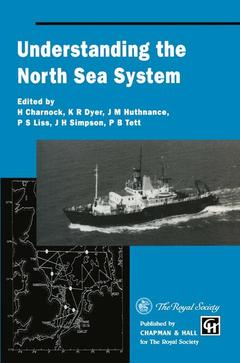Understanding the North Sea System, Softcover reprint of the original 1st ed. 1994
Langue : Anglais
Auteurs : Charnock H., Dyer K.R., Huthnance J.M., Liss Peter, Simpson B.H.

The continental shelf seas have an importance which is out of proportion to the rela tively small fraction of the area of the global ocean which they occupy. These shallow seas play an important role as the high energy boundary zones of the deep ocean where much of the ocean's tidal and wave energies are dissipated. They are highly productive biologically and are responsible for most of the world's fishery production. In many cases, they are also sources of economically important resources, notably hydrocarbons and they are frequently important as thorough fares for merchant shipping. Because they are the regions of the ocean closest to our centres of population and industrial activity, they have been the first to feel the impact of the increasing pressures imposed by large scale waste disposal into the ocean. The North Sea is an archetypal representative of such seas: we need to be able to understand its processes and predict them if we are to achieve a degree of rational management in the future, as the environmental threats increase. The understanding required extends through a wide range of processes that operate in the shelf seas from the fundamental physics to the chemistry and biology of the water column and the seabed sediments. These processes, and the interactions between them, cut across the traditional discipline boundaries within marine science and require a substantial inter disciplinary effort for their effective study.
1 Introduction to the North Sea Project.- 2 Seasonal cycles and their spatial variability.- 3 The influence of horizontal circulation on the supply and distribution of tracers.- 4 Suspended particulate matter in the North Sea: field observations and model simulations.- 5 Dynamics of tidal mixing fronts in the North Sea.- 6 Circulation, hydrographic structure and mixing at tidal fronts: the view from Georges Bank.- 7 Hydrodynamics and sediment dynamics of North Sea sand waves and sand banks.- 8 Resuspension processes and seston dynamics, southern North Sea.- 9 Biological consequences of tidal stirring gradients in the North Sea.- 10 Modelling water column processes in the North Sea.- 11 Seasonal fluxes across the sediment—water interface, and processes within sediments.- 12 Trace gases and air-sea exchanges.- 13 The atmospheric distributions of trace metals, trace organics and nitrogen species over the North Sea.- 14 Processes influencing the fate of trace metals in the North Sea.- 15 Towards water quality models.- 16 The North Sea Project: an overview and the way forward.
Date de parution : 11-2012
Ouvrage de 222 p.
15.5x23.5 cm
Thème d’Understanding the North Sea System :
Mots-clés :
Continental shelf; distribution; energy; hydrodynamics; modelling; ocean; sediment; shelf seas; water
© 2024 LAVOISIER S.A.S.



